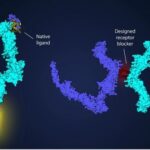Doug Saunders in today’s Globe and Mail has written “the idea of geoengineering planet-scale projects to reverse climate change…has recently gained a lot more mainstream credibility in both scientific and policy circles.” He goes on to talk about a major breakthrough, the convening of a blue ribbon panel consisting of scientists from the U.S. National Research Council, NASA, U.S. Geological Survey, and the National Oceanic and Atmospheric Administration, to evaluate potential geoengineering projects.
Whether these are projects aimed at mitigating climate change impact or reversing the amount of carbon going into the atmosphere, the proposed ideas have already been shown to be short on science. Talk about a bull in a china shop approach to the problem of global warming. The panel will toss around the idea of putting more chemicals into the atmosphere to make it more reflective so that solar heat doesn’t get trapped as much by the methane and CO2 that we currently are emitting from industry, transportation, and energy creation. Another is seeding the ocean with iron to increase the capacity of the water to absorb CO2. And the third is treating soils with massive amounts of charcoal or biochar to trap CO2. The trillions of dollars we will ultimately spend on all of these remediation technologies represents a distinct human flaw. Instead of preemptive strategies these blue ribbon scientists would rather deal with the after-the-fact consequences of rising atmospheric temperatures and conduct a planet-wide geoengineering experiment.
Not to point out one of the obvious flaws in this blue ribbon panel but where is the representation from the rest of the planet? All the organizations gathered at this group discussion were American. A global remedy is not something one nation can undertake without involving the rest of the planet.
And why should nations speak for all of humanity when discussing the issue of climate change? Since the Kyoto Protocol they have proven to be woefully hopeless in developing collective climate change strategies. Instead we have a surge of environmental social network activists forming guerrilla movements to reverse human induced climate change. And municipalities both small and large have become activists as well in the fight to reverse global warming. Meanwhile national governments more concerned with GDP growth fail to see that carbon remediation represents a significant economic opportunity. A few days ago I wrote about the first four years of the carbon tax in the Province of British Columbia and how the end result has been a reduction in greenhouse gas emissions with no impact on economic growth.
But better we should conduct a planet-wide experiment seeding the oceans with iron (which by the way doesn’t work as we recently discovered), or putting more reflective chemicals into the atmosphere without thinking about negative chemical impacts on the biology of the planet, or burning biomass to create biochar and the heat load from burning and its impact on the atmosphere.
Today our climate models are as sophisticated as the super computers that run them. We have more than a century-and-a-half of collected weather data. But in truth we still don’t know enough to accurately forecast what we will experience in coming decades as CO2 levels creep upward from today’s 400 parts per million to 450 by mid-century. All we know is both the atmosphere and ocean are warmer than they have been in recorded history and that the last two decades have seen a startling spike in temperature data. The spike correlates closely with the rise in CO2. So the answer is really simple. Stop creating more CO2. Move rapidly to a smaller carbon footprint. Create awareness along with action by introducing policies that move us away from burning carbon as rapidly as possible. And do this with the same dedication we have shown in waging war.











(((Stop creating more CO2. Move rapidly to a smaller carbon footprint. Create awareness along with action by introducing policies that move us away from burning carbon as rapidly as possible. And do this with the same dedication we have shown in waging war.)))
I hate to keep on beating the same stinking dead horse, but the basic problem is overpopulation. Treating gunshot wounds with band-aids is worse than nothing at all. It’s simple systems engineering 101. The rising CO2 levels result from the energy production required to sustain the overpopulation. Much of the developing world is already operating at near the minimal energy level, and if more affordable energy were available, the developing world population would promptly increase another 30-40%. All of the proposed technical CO2 reduction schemes require the investment of even more energy, which would further reduce the affordable energy available to the developing world.
The least bad and most economical course to try to arrest the CO2 buildup and many other environmental concerns is to reduce population. Seems likely the first world is, or could be, productive enough to support an unproductive developing world that reduces its population. The first world must tell the third world woman that she will have free shelter, food, clothing, internet and TV just as long as she stays in her restricted territory and doesn’t reproduce. If she reproduces or leaves her assigned territory she is on her own. You have a drastic problem. If you refuse to pursue a drastic program “with the same dedication we have shown in waging war,” your cause is lost.
On a per capita carbon footprint basis, China’s draconian one child per couple policy is the most promising present model. China is indeed increasing its bulk carbon footprint, but if it maintains its delayed marriage one child per couple policy for many generations, eventually the population will shrink to zero, as would its carbon footprint. The present policy insures that for each two persons that die only one person will replace them. The Chinese government can only sustain the one child policy as long as it can provide sufficient quality of life incentives to couples in their childbearing years. The major 250 million relocation to industrial centers program will require more energy in the first generation, but the next generation will only be 125 million, and the next generation only 62 million, and so on. In three generations, say 70-years, the initial 250-million shrinks to 31-million, and the old coal fired plants will have been retired with all China’s power produced by zero carbon technologies. The big unanswered question is whether agreeable population control can happen soon enough to avert environmental catastrophe.
I agree that overpopulation is a principle cause of our over production of carbon but name a democracy on this planet that would institute what China did in its one child policy and I will show you a government that would have no chance of survival. Self interest and short-term political gain characterize government decision making today. Practically speaking could a government pay people not to have children and make this policy succeed? It would be interesting to see if such a proposal would fly.
But look at Sub-Saharan Africa where we will see the largest population growth in the next 50 years. These countries are largely a total mess. Short of a series of draconian acts by governments wielding a very strong hand the likelihood of stopping population growth in this part of the world is next to nil.
((( Practically speaking could a government pay people not to have children and make this policy succeed? It would be interesting to see if such a proposal would fly. )))
Well, it seems like the only humane approach that could actually make a difference to the global overpopulation problem. Certainly it could in principle be sold in the US. It’s just a matter of teaching the simple fourth grade arithmetic to the voters.
Discounting eventual environmental benefits, treasury revenues would actually increase, crime rates would fall, and government expenses would diminish. Each new child born in the US probably costs the taxpayers on average over $20,000 per year for the next 18-years. That’s $360,000, per child. If we gave $10,000 per year to the potential mothers not to be mothers, for each child not born the taxpayer would be $10,000 per year ahead. The non-mothers would then be unencumbered to seek employment or education. GDP would rise along with tax revenues. If such a program were phased in for each girl that turns age 12, about 2-million girls per year, first year payments would only be $20-billion. Then for the next 12 years, payments for childless females would rise by $20-billion per year, maxing out at about $250-billion annually. After 12 years, very few new persons of either sex would be turning age 12. There are countless possible variations on details of the theme that actually reduce expenses and increase GDP.
Such a program wouldn’t be draconian at all, because each female could of her own free choice decide if she wanted to be a poor ignorant mother, or a prosperous well-educated childless citizen. If a girl puts all her no-mother money into a savings plan that returns 5%, when she reaches age 24 she would have $174,000 saved. If she had a child then, she wouldn’t be impoverished, and she wouldn’t be getting $833 per month from the taxpayers. If she sticks with the no-child savings plan until age 36, she will have $500,000 in savings. Six years later, at age 42, the program would end and she would have over $700,000 in savings. Who knows how many females would decide they would rather have $833 tax free per month than a baby? I’m betting most would say, “Give me the money.” But if they say, “Give me the baby” the taxpayers and the environment are certainly no worse off than they are now.
In the third world, the program probably wouldn’t require $833/month/female. $100/month would probably do it. (One can envision new forms of social units where a number of females form an all female family, share a residence, and have an annual family income of say $7,200 from no-child money. Maybe females wishing to make babies could form family units with four or five husbands, or four or five childless females. Possibilities are endless.) Suppose 20-million third world girls are turning twelve every year. First year payments would amount to only $24-billion for the entire third world. For the next twelve years payments would increase by another $24-billion/year, maxing out at $288-billion and declining thereafter. Is the first world willing to spend $288-billion/year to arrest population growth in the third-world? If it isn’t, forces of Cosmic Compensation require it to spend trillions learning how to tread water and relocating all its coastal cities.
It is the Developing World where financial incentives could reduce the fertility rate. But urban migration in the Developing World which will help as well causing natural fertility decline.
((It is the Developing World where financial incentives could reduce the fertility rate. But urban migration in the Developing World which will help as well causing natural fertility decline.))
Financial incentives would reduce the fertility rate anywhere at all. In the first world, a baby not born reduces carbon emissions more than a baby not born in the third world. The highest fertility rates in the first world are among the poorest social stratums. The first world is overpopulated. The principal first world problem is welfare costs that are heading all the governments toward bankruptcy. The best chance of controlling runaway spending is to curtail birthrates.
Victorvan Rij • Dear Len, most of the geo engineering concepts seem to focus on cooling and are to my view very very costly while worldwide regreening deserts (perhaps with cyanobacteria fields using salt water, uis one of the ideas of Dennis Bushnell opf NASA ) and increase the uptake of CO2 by smart agriculture and forestry (using C4 plants and techniques that increase the photosynthetic activity) and perhaps engineering poor (CO2 sequestrating) natural ecosystems would be something within reach and does not have to cost a lot, if we use part of the “extra catched” Carbon to make 2nd or 3rd generation bio-energy, while the rest of extra “C” will be permanently sequestrated (for instance by re-using wood as building material for buildings and wind mills that now seem to use a lot of concrete and aluminum , which is very unfriendly in greenhouse effects) . Main driver for this would be a worldwide set of agreements to change our agricultural systems and forestry this way and to find an economic model that suits this development rewarding extra catch of C and bio-energy versus taking C- resources from deep sea, antartica or from sources that may pollute our drinking water. Would of course be wonderful to have efficient artificial photosynthesis to produce fuel and electricity and sequestrate CO2 in very well chosen partitions and place this in desert and other ecosystems that have little photosynthetic productivity.(I think that is what you mean with solar sponges?.) but the development of this is still in a very early stage.
Victor van Rij
I didn’t hear your plan for restoring the human population to the “natural” 500,000 level. If the planet is to sustain an unnatural 7 Billion people its obvious it must do it through unnatural means.
Well, Victor, Dennis Bushnell thinks LENR is the most promising alternative energy technology. Why doesn’t he suggest harnessing millions of E-Cats to desalinization plants all along the Mediterranean coast of Africa. Then the Arabs could grow billions of tons of dirt cheap pumpkins in the otherwise unproductive deserts. Then the pumpkins could be barged out into the deep oceans and be permanently sequestered in the depths.